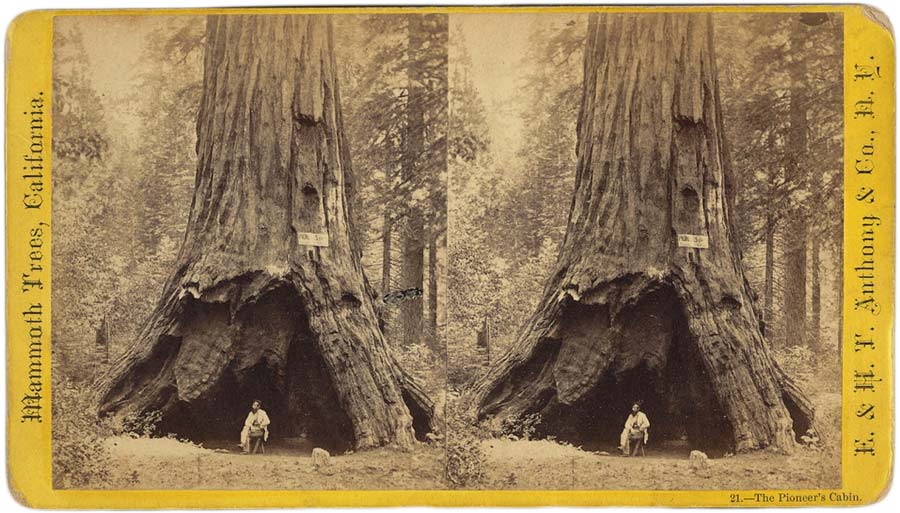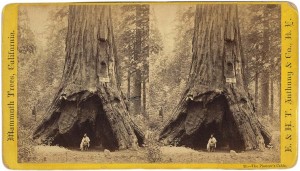It’s neither “iconic” nor “ironic.”
“Storm fells one of California’s iconic drive-through tunnel trees, carved 137 years ago,” Travis M. Anderson’s title informs us. Calaveras Big Trees State Park is famous for its hollowed-at-the-trunk Pioneer Cabin Tree, a sequoia you have seen in hundreds of photos.
It fell, almost certainly, because of a storm. The ground got wet, undermining the sturdiness of the tree’s root system. And the winds got fast, sending the tree crashing to the ground.
But that’s not the hole — er, whole story.
The obvious reason it fell down is that the “hollowed-out” tunnel amounted to a huge cut. It is almost as if loggers started the felling job nearly seven score ago, and it took all that time to fall.
That is not “ironic,” in case you were wondering. It’s to be expected. The real wonder is that it stayed up so long.
Which should remind us: more than one cause can contribute to a singular effect. We are always tempted to focus on only one factor when we argue about an event. But in society, as in trees and forests, multiple influences are always at work.
Life isn’t monocausal, to put it in professor-speak.
Anderson dubbed the tree “iconic.” Now, an icon is an image used to stand in for other things that look similar. That tree didn’t stand in or represent, did it, other trees in the forest? It stood in memory by standing out as different, distinct — one of a very few hallowed, hollowed California sequoias. The opposite of “iconic.”
Still, in using the tree’s toppling as an object lesson in complexity, the fallen timber might be iconic. It stands for a common sense view of how tragedies happen.
This is Common Sense. I’m Paul Jacob.

